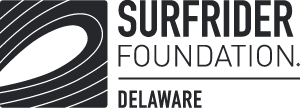Important Dates and Talking Points For Public Input on the
Permits Needed for the Rehoboth Beach Ocean Outfall Pipe.
Public Hearing On Nov 15th – speakers will be given 5 minutes of oral testimony. THIS IS THE BIG ONE EVERYONE SHOULD ATTEND! DNREC PUBLIC HEARING 6 p.m., Tuesday, Nov. 15, 2016
Rehoboth Elementary School 500 Stockley Street RB, DE 19971. See the link for more resources and the talking points below.
More info is available – the City’s permit applications, supporting documents, a fact sheet, and a draft NPDES permit all will be available on DNREC’s website at http://www.dnrec.delaware.gov/Admin/Pages/Rehoboth-Wastewater-Projects-Info.aspx
Priority to preregistered speakers. To preregister, please e-mail before Nov. 11, 2016 - Email: Rehoboth_Wastewater_Comments@state.de.us
Dec 2nd – final day for written comments. Same address above Rehoboth_Wastewater_Comments@state.de.us
For more information or questions contact Gregg Rosner at 3lungho@gmail.com
The Public Meeting, Public Hearing and the oral and written comments are about the 6 additional permits the Outfall Pipe Project needs from the State to send treated water from the sewage treatment plant into the ocean.
When you attend the Public Hearing on Nov 15th, and when you submit written comments, please keep these bullet points below in mind.
- The Final Environmental Impact Statement, FEIS, didn’t discuss regulatory laws as required by the National Environmental Policy Act, NEPA. For example the Endangered Species Act, the Coastal Zone Management Act and others. The FEIS is supposed to discuss the project’s alignment with these laws and the possible conflicts between the laws, policies and the project.
But in the case of the Endangered Species Act, the FEIS merely lists the species that are threatened or endangered in Delaware. There is no discussion of the law and the impact of the project. This applies to the newly listed Atlantic Sturgeon and all listed species. The public cannot properly comment on these permits because they are not armed with the proper information in the EIS.
- The Marine Mammal Protection Act defines a Level B Harassment as any act of pursuit, torment, or annoyance which has the potential to disturb a marine mammal or marine mammal stock in the wild by causing disruption of behavioral patterns, including, but not limited to, migration, breathing, nursing, breeding, feeding, or sheltering but which does not have the potential to injure a marine mammal or marine mammal stock in the wild.
But The conclusions by DNREC, that both fish species and marine mammals will move away from the outfall diffuser conflicts with these federal regulations. And these federal laws should have been discussed thoroughly in the FEIS but were not. The public cannot properly comment on these permits without the proper information in the EIS.
The Delaware State Statues (laws) cited below are further evidence that the proposed outfall pipe is in conflict with state policies and regulations. None of this was discussed in the FEIS, which makes it impossible for the public to comment on these permits. Please cite one of these laws below as evidence that this project is not consistent with Delaware laws.
Delaware Policies and Regulatory conflicts
- 5.3.1.3 - The coastal water resources of the state shall be protected and conserved to assure continued availability for public recreational purposes and for the conservation of aquatic life and wildlife. [7Del.C. §6001(a)(4)] Construction and operation of the project violates this policy because of the discharges of treated wastewater, which doesn’t fully eliminate certain contaminants like pharmaceuticals, and because of the risk of future violations and untreated sewage discharges.
- 5.3.1.4 - It is the policy of the DNREC to maintain within its jurisdiction surface waters of the State of satisfactory quality consistent with public health and public recreation purposes, the propagation and protection of fish and aquatic life, and other beneficial uses of the water
- 5.3.1.11 – (Passed in 2004) Regulatory mixing zones shall not impinge upon areas of special importance, including but not limited to drinking water supply intakes, nursery areas for aquatic life or waterfowl, approved or conditional shellfish areas or heavily utilized primary contact recreation areas. Zones shall not be located in such a manner as to interfere with passage of fishes or other organisms. Shore hugging plumes should be avoided to the maximum extent practicable. In areas where multiple discharges are located in proximity, overlapping discharge plumes may occur. In such instances, the thermal mixing zone, which is not to exceed 25% of the cross-sectional area of the receiving water as measured from the point of discharge to the opposite shore, may be reduced to preclude acute toxicity in the overlap areas, or to ensure an adequate zone of passage for fish. (This state law protects and defines Delaware’s responsibility under the applicable ESA & MMPA).
- 5.11.3.2 - Rare and endangered species are in need of active, protective management to preserve and enhance such species. The diversity and abundance of the native flora and fauna of Delaware, particularly those deemed rare or endangered, shall be preserved and enhanced through the protection of the habitat, natural areas, and areas of unusual scientific significance or having unusual importance to their survival. [7 Del.C. §201(1)(2)] This law assists protection of the Atlantic Sturgeon in Delaware waters.
